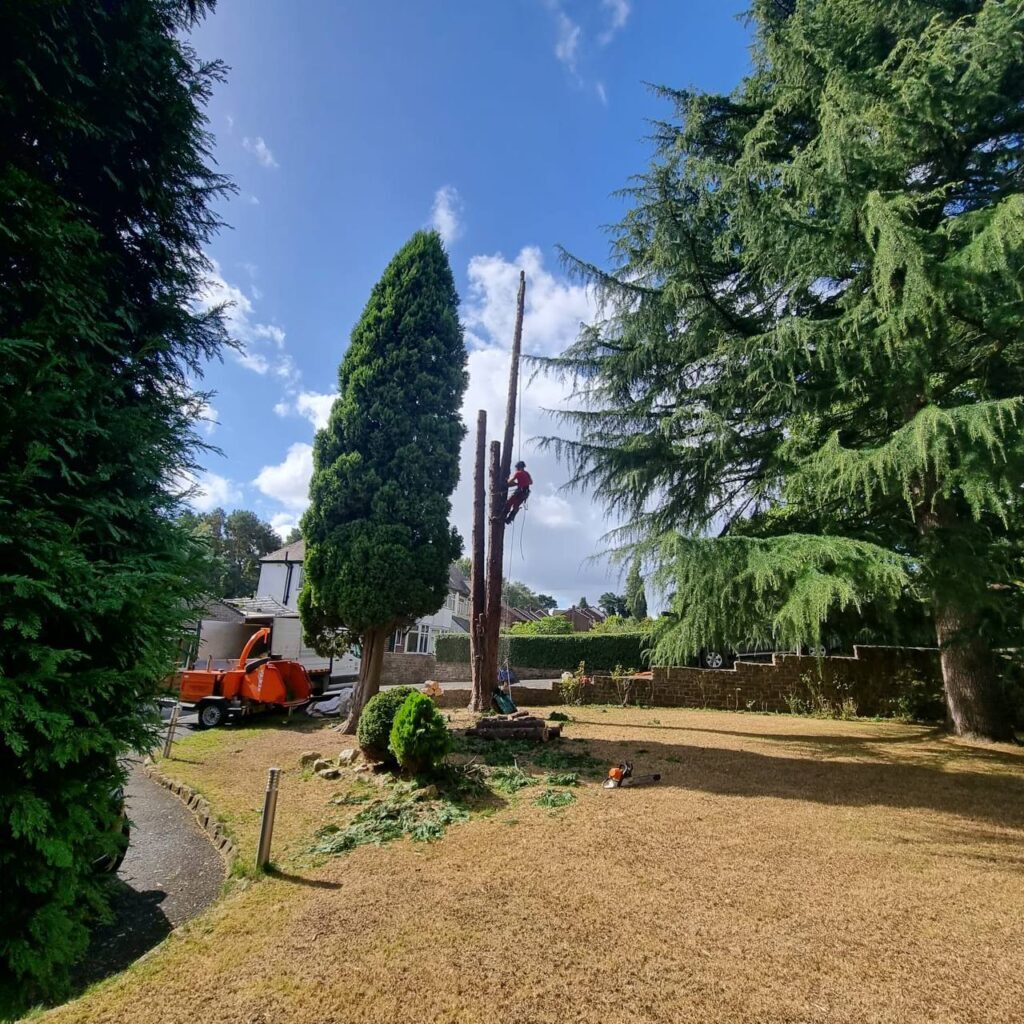Trees are vital to our environment, providing shade, beauty, and habitats for wildlife. However, like all living things, trees can sometimes experience health issues or sustain damage that requires expert intervention. Knowing when to call a professional tree surgeon is crucial to preserving the health and safety of your trees and property. At Tamworth Tree Surgeons, we specialise in providing expert care for trees in Tamworth, Staffordshire. In this blog post, we’ll explore the situations where calling a tree surgeon is essential and how our services can help rescue your trees.
1. Visible Signs of Disease
One of the most common reasons to call a tree surgeon is the presence of disease. Trees can suffer from various ailments, including fungal infections, root rot, and pest infestations. Signs of disease include:
- Discoloured or Wilting Leaves: Leaves that are yellowing, browning, or wilting out of season may indicate a problem.
- Fungal Growth: The appearance of mushrooms or other fungi on the trunk or around the base of the tree can be a sign of internal decay.
- Dead or Dying Branches: A tree with numerous dead branches may be struggling with disease or structural issues.
- Unusual Bark Patterns: Cracked, peeling, or missing bark can be a symptom of a serious health problem.
If you notice any of these signs, it’s important to consult a tree surgeon. Early diagnosis and treatment can often save the tree and prevent the disease from spreading to other plants in your garden.
2. Structural Damage
Structural damage to a tree can occur due to various factors, including severe weather, accidents, or improper pruning. Signs of structural damage include:
- Leaning Trees: A tree that has suddenly started leaning may have root damage or a weakened trunk, posing a risk of falling.
- Cracked or Split Trunk: Visible cracks or splits in the trunk are serious issues that require immediate attention.
- Broken or Hanging Branches: Large branches that are broken or hanging precariously can fall at any time, posing a danger to people and property.
In cases of structural damage, a tree surgeon can assess the stability of the tree and determine the best course of action, whether it’s bracing, cabling, or removal.
3. Overgrown or Encroaching Trees
Trees that have outgrown their space or are encroaching on structures, power lines, or other trees may require professional attention. Overgrown trees can:
- Block Light and Views: Dense canopies can block sunlight from reaching your garden, affecting the growth of other plants.
- Interfere with Structures: Branches that touch or overhang roofs, walls, or power lines can cause damage or become a hazard during storms.
- Crowd Other Trees: Trees that are too close together can compete for nutrients and light, leading to poor health for all involved.
A tree surgeon can expertly prune or trim the tree to manage its growth, ensuring it remains healthy and well-placed within your landscape.
4. Storm Damage and Emergency Situations
Severe weather can cause significant damage to trees, leading to emergency situations where immediate action is required. After a storm, you may notice:
- Uprooted Trees: High winds can uproot trees, especially those with shallow root systems.
- Fallen Branches: Heavy branches can break off and fall, potentially causing damage to property or blocking access.
- Split Trunks: The force of a storm can split a tree’s trunk, compromising its stability.
In such cases, it’s crucial to call a tree surgeon as soon as possible. They can safely remove hazardous trees or branches and provide advice on how to protect your remaining trees from future storms.
5. Preservation of Heritage Trees
Some trees have historical or sentimental value, and preserving them requires specialised care. Whether it’s a centuries-old oak or a tree planted by a loved one, a tree surgeon can provide the expertise needed to maintain the health and longevity of these important trees. They can offer services such as:
- Crown Reduction: Reducing the size of the tree’s canopy to relieve stress on the branches and trunk.
- Root Care: Ensuring the tree’s root system is healthy and not obstructed by construction or soil compaction.
- Pest and Disease Management: Protecting the tree from pests and diseases that could threaten its survival.
Conclusion
Knowing when to call a tree surgeon can make all the difference in maintaining the health and safety of your trees. Whether you’re dealing with disease, structural damage, or overgrown branches, professional intervention can help rescue your trees and preserve the beauty of your landscape. If you’re in Tamworth, Staffordshire, and need expert tree care, contact Tamworth Tree Surgeons today. Our experienced team is ready to provide the high-quality services you need to keep your trees thriving.
Call us on: 01827 214 496
Click here to find out more about Tamworth Tree Surgeons
Click here to complete our contact form and see how we can help with your tree’s needs.

